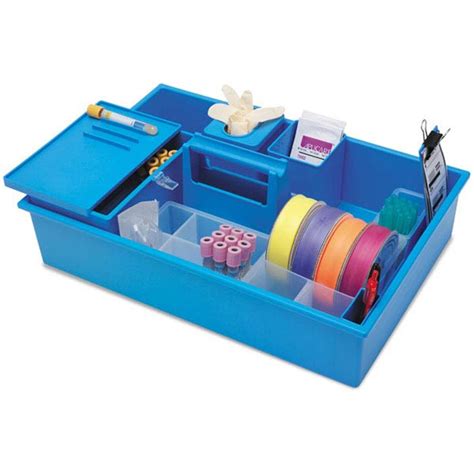
Latest Advances in Phlebotomy: Trends, Tips, and Industry News You Need to Know
Phlebotomy, the practice of drawing blood for laboratory testing, transfusions, donations, and research, is a critical component of modern healthcare. As medical technology and patient care standards evolve, so too does the field of phlebotomy. Staying updated with the latest advances in phlebotomy can improve patient outcomes, increase procedural efficiency, and ensure compliance with industry standards.
Introduction
The world of phlebotomy is rapidly changing,driven by technological innovations,stricter safety protocols,and ongoing research. Whether you are a seasoned phlebotomist, a medical student, or a healthcare administrator, understanding the current trends and news in this field can give you a vital edge. This extensive guide explores the latest advances, industry trends, practical tips, and future prospects in phlebotomy-making it an essential resource for healthcare professionals aiming to provide safe, efficient, and patient-centered blood collection services.
Emerging Trends in Phlebotomy
1. Automation and Robotics in Blood Collection
One of the most meaningful advances shaping the phlebotomy industry is automation. Automated blood collection devices and robotic phlebotomy systems are revolutionizing how blood is drawn, especially for large hospitals and laboratories. These technologies offer numerous benefits:
- Increased accuracy: Robotic systems minimize human error in needle placement.
- Enhanced safety: Reduced risk of needlestick injuries for staff.
- Efficiency Boost: Faster blood draw procedures with minimal patient discomfort.
2. Digital and Mobile Phlebotomy Solutions
Mobile apps and digital platforms are streamlining the phlebotomy workflow,enabling real-time scheduling,patient records management,and instant lab order processing. These innovations facilitate:
- Remote patient tracking
- Automated documentation
- Interaction between lab technicians and healthcare providers
3. improved Patient-Centered Techniques
Enhanced patient comfort remains a priority, prompting advancements such as:
- Use of gentle tourniquets and innovative needle designs for minimal pain.
- Pre-procedure patient education to reduce anxiety.
- Introduction of vein visualization technology, like near-infrared devices, to locate veins more accurately.
4. Focus on Safety and Compliance
New safety regulations, including OSHA mandates and CDC guidelines, are pushing for better safety tools-including safety-engineered needles and better disposal systems. Staying compliant reduces risk of infection and needlestick injuries, fostering a safer habitat for both patients and staff.
Practical Tips for Modern Phlebotomy
1.Mastering Vein Visualization Technology
If your facility adopts vein visualization devices, proper training is essential. Practice positioning and calibration, and educate patients on the benefits to reduce their apprehension.
2. Embracing Automation Tools
- Learn how to operate new robotic or automated blood collection devices effectively.
- Familiarize yourself with troubleshooting procedures to minimize device downtime.
3. Enhancing Patient Comfort and experience
- Use the latest lancets and needles designed for minimal discomfort.
- Communicate clearly with patients, explaining procedures and addressing concerns.
- Encourage hydration prior to blood draws to facilitate vein access.
4. Upholding Safety Standards
- Always utilize safety-engineered sharps containers.
- Follow hand hygiene and personal protective equipment (PPE) protocols meticulously.
- Stay updated with OSHA and CDC guidelines through continuous education.
Industry News and Future Outlook
Recent Industry Developments
| Year | breakthrough | Impact |
|---|---|---|
| 2023 | Introduction of AI-assisted vein detection | Improves success rates in arduous draws |
| 2022 | Expansion of robotic blood draw systems | Increases efficiency in high-volume settings |
| 2021 | Development of eco-friendly safety devices | Reduces medical waste and enhances safety |
Future Prospects in Phlebotomy
The future of phlebotomy is promising, with ongoing innovation aiming to:
- Integrate artificial intelligence for personalized blood collection protocols
- Use nanotechnology for less invasive sampling methods
- Implement virtual reality training modules to enhance skill acquisition
- Develop wearable sensors for continuous blood monitoring
Benefits and Practical Tips for Phlebotomy Professionals
Benefits of Staying Updated
- Enhanced patient safety and comfort
- Reduced procedure times and increased throughput
- Compliance with evolving health regulations
- Career advancement opportunities
Practical Tips for Continued Education
- Attend industry workshops and conferences regularly
- Subscribe to reputable medical journals and newsletters
- Engage with professional communities online
- Invest in certifications that cover latest technologies and protocols
Case studies and first-Hand Experiences
Case Study: Implementing Vein Finder Technology
At Sunrise medical Center, introducing near-infrared vein visualization devices resulted in a 25% reduction in missed vein attempts and improved patient satisfaction scores. Training sessions improved staff confidence, making blood draws faster and less distressing for patients.
Personal Experience: Adapting to Automation
As a seasoned phlebotomist, adapting to automated systems initially posed challenges, but embracing the technology ultimately increased my efficiency and accuracy.Training and continuous practice were key to mastering these new tools, leading to a more streamlined workflow.
Conclusion
The landscape of phlebotomy is evolving at a remarkable pace, driven by innovative technologies, safety advancements, and a renewed focus on patient-centered care. Staying abreast of the latest trends-such as automation, digital solutions, and improved safety protocols-can considerably elevate the quality and efficiency of blood collection procedures.Embracing these advances not only benefits patients but also enhances professional growth and industry standards.
Whether you’re adopting new equipment or refining your techniques, continuous education and adaptation are crucial. By integrating these latest advances in phlebotomy into your practice,you’ll be well-positioned to provide safe,efficient,and compassionate care in a dynamic healthcare environment.